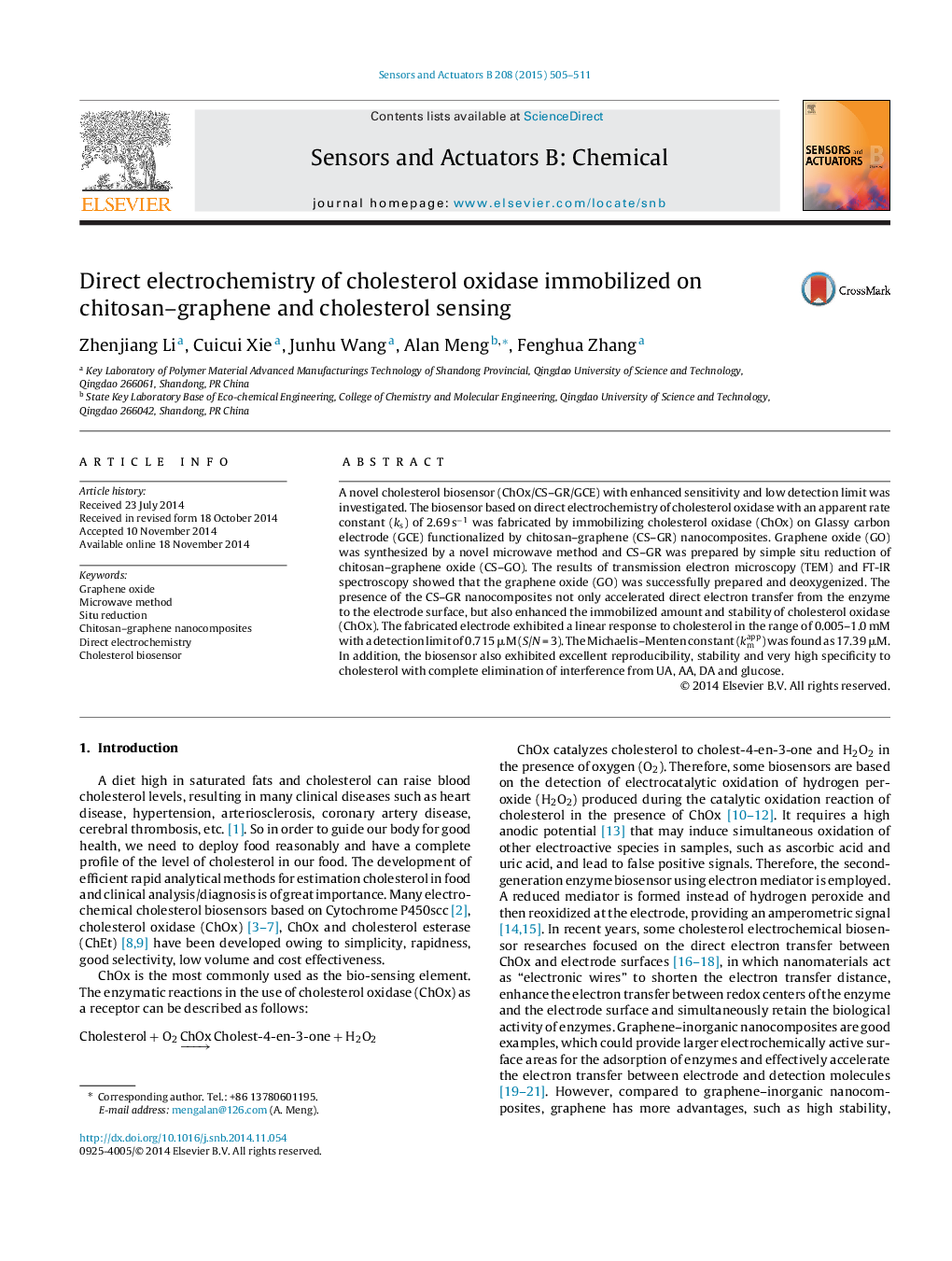| کد مقاله | کد نشریه | سال انتشار | مقاله انگلیسی | نسخه تمام متن |
|---|---|---|---|---|
| 750852 | 1462083 | 2015 | 7 صفحه PDF | دانلود رایگان |

• A novel biosensor based on the direct electron transfer of ChOx immobilized on CS–GR was designed.
• The preparation process of the biosensor was simple and low cost.
• GO was synthesized by a novel microwave method and CS–GR was prepared by simple situ reduction of CS–GO.
• It exhibited low kmapp, low detection limit, wide linear range and excellent reproducibility and stability.
• It exhibited very high specificity to cholesterol with complete elimination of interference from UA, AA, DA and glucose.
A novel cholesterol biosensor (ChOx/CS–GR/GCE) with enhanced sensitivity and low detection limit was investigated. The biosensor based on direct electrochemistry of cholesterol oxidase with an apparent rate constant (ks) of 2.69 s−1 was fabricated by immobilizing cholesterol oxidase (ChOx) on Glassy carbon electrode (GCE) functionalized by chitosan–graphene (CS–GR) nanocomposites. Graphene oxide (GO) was synthesized by a novel microwave method and CS–GR was prepared by simple situ reduction of chitosan–graphene oxide (CS–GO). The results of transmission electron microscopy (TEM) and FT-IR spectroscopy showed that the graphene oxide (GO) was successfully prepared and deoxygenized. The presence of the CS–GR nanocomposites not only accelerated direct electron transfer from the enzyme to the electrode surface, but also enhanced the immobilized amount and stability of cholesterol oxidase (ChOx). The fabricated electrode exhibited a linear response to cholesterol in the range of 0.005–1.0 mM with a detection limit of 0.715 μM (S/N = 3). The Michaelis–Menten constant (kmapp) was found as 17.39 μM. In addition, the biosensor also exhibited excellent reproducibility, stability and very high specificity to cholesterol with complete elimination of interference from UA, AA, DA and glucose.
Journal: Sensors and Actuators B: Chemical - Volume 208, 1 March 2015, Pages 505–511